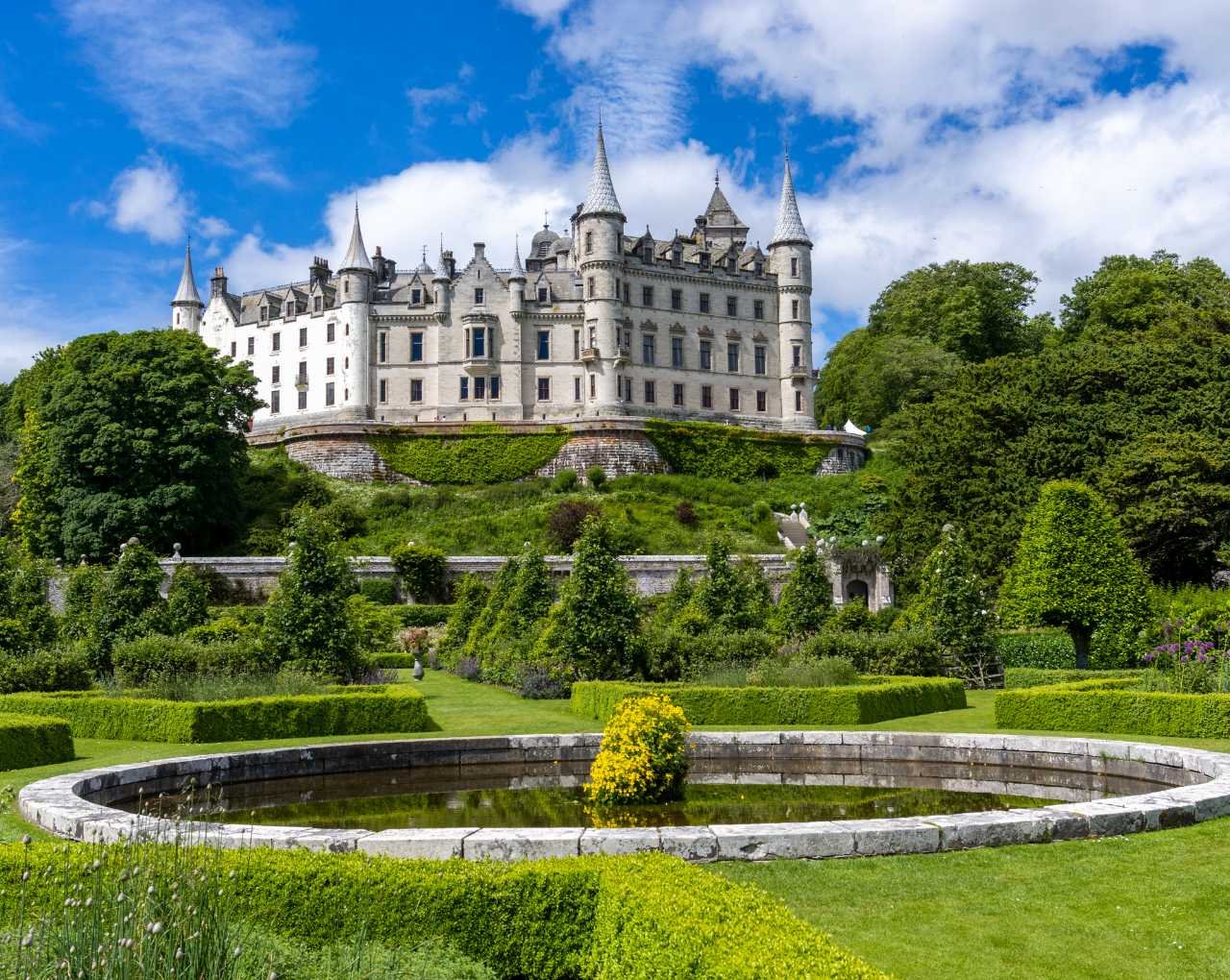
Dunrobin Castle: A Highland Masterpiece
Clan Struggles and Evolving Ownership
Dunrobin Castle's history is not without its share of tumultuous events. Clan disputes and power struggles colored its narrative. In 1518, during the absence of Adam Gordon, the castle fell into the hands of Alexander Sutherland, the legitimate heir to the Earldom of Sutherland. The Gordons, however, swiftly reclaimed the castle, marking a period of strife.
The Jacobite Rising of 1745 brought further turmoil when Jacobites, led by Charles Edward Stuart, seized Dunrobin Castle. The 17th Earl of Sutherland narrowly escaped their clutches. The castle's history is rife with episodes of conflict and resilience, reflecting the ever-changing tides of Scottish history.
A Tapestry of Eras
While Dunrobin Castle we see today mostly dates from the 19th century, its origins are firmly rooted in the annals of Scottish history. The story begins in the Middle Ages when the lands of Sutherland were acquired by Hugh, Lord of Duffus, a descendant of the Flemish nobleman Freskin, before 1211. The Earldom of Sutherland was established around 1235, creating a lineage that would eventually lead to the construction of Dunrobin Castle.
The earliest portions of the castle, characterized by their robust stone vaults and a formidable iron yett, were erected around 1401. It is thought that the castle's name pays homage to Robert Sutherland, 6th Earl of Sutherland, a figure of significance in the castle's early history.
Architectural Transformation
Between 1835 and 1850, Sir Charles Barry, the acclaimed architect behind the Palace of Westminster, undertook a grand transformation of Dunrobin Castle. Influenced by the Scottish Baronial style, Barry's vision added a new dimension to the castle's aesthetic. While retaining the 14th-century tower and certain 17th and 18th-century extensions, Barry's work breathed new life into the castle, resulting in the architectural masterpiece that graces Sutherland today.
A Place of Restoration and Renovation
Throughout its history, Dunrobin Castle has faced challenges, including a damaging fire during its use as a naval hospital in 1915. However, the castle's resilience prevailed, and renowned Scottish architect Sir Robert Lorimer oversaw its restoration after World War I.
In the mid-20th century, the castle played a diverse role, including serving as a boarding school for boys between 1965 and 1972. Since 1973, Dunrobin Castle has opened its doors to the public, inviting visitors to explore its rich heritage, lush grounds, and the captivating stories that resonate within its walls.
Dunrobin Castle is more than a historic site; it is a living testament to the indomitable spirit of Scotland and the enduring legacy of the Clan Sutherland. Explore its halls, admire its architecture, and immerse yourself in the captivating history that has shaped this Highland masterpiece.



